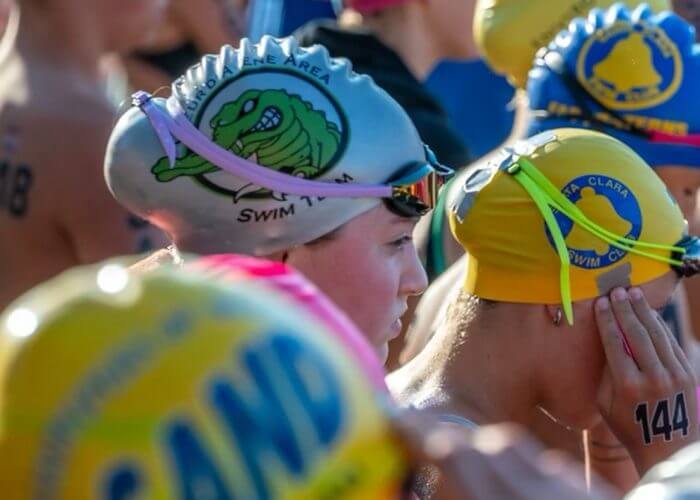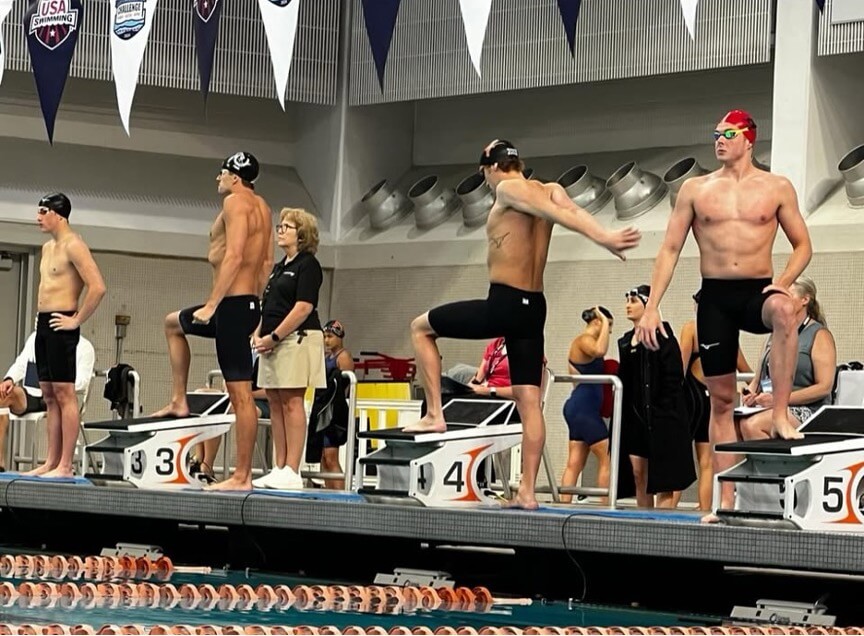The Importance of Qualitative Measures in Swim Coaching
By Brad Jones
In modern swim coaching, it is easy to become enamored with numbers. Stroke counts, power outputs, lactate levels, and spreadsheets can give the impression that performance can be fully captured in data. These tools are valuable, but they do not tell the whole story. Swimming is not just about numbers; it is about how the body organizes itself within the water. To develop athletes fully, coaches must balance quantitative measures with qualitative ones—paying attention to movement quality, perception, and integration.
Two Types of Coaches—and the Balance Between Them
Courtesy: Bellingham Bay Swim Team
Most coaches lean toward one of two styles. The first type is intuitive, spontaneous, and deeply engaged in movement qualities. These coaches are good at asking athletes questions. They notice details in body position, rhythm, timing, and flow. They are good at creating awareness. The second type is the planner: organized, structured, and engrossed with data and workout design. Neither style is wrong. But when a coach becomes too rigidly tied to one side, opportunities are lost. True effectiveness lies in blending both—using structure to guide training, while leaving room for exploration and feedback.
Beyond Sprint vs. Distance: A Parametric View
Debates often center around sprint versus distance training. But the parametric model offers a more integrated perspective, pairing aerobic and anaerobic development rather than treating them as separate silos. This framework parallels how we should view qualitative and quantitative measures. Power tests, times, and stroke rates matter, but they only capture outcomes. We must also look at how swimmers organize themselves in the water and how movement patterns support energy systems.
Organizing the Body in the Environment
Swimming is not a matter of isolated muscle groups; it is about the whole system. Kicking, pulling, and core engagement are interdependent. For example, “bringing it home with the legs” at the end of a race is often emphasized. But will adding more kick power always help? If core stability breaks down or stroke rate collapses, the gain disappears. A qualitative lens asks how the swimmer engages the legs within the context of balance, alignment, and body flow. Numbers alone cannot reveal this.
Sensory Perception and the Role of Experience
One of the most effective ways to build qualitative awareness is through sensory perception. Instead of prescribing cues like medications—“fix this, adjust that”—coaches can create experiences where swimmers interpret and adapt. Asking, What did you feel? How did the water respond? encourages athletes to sense their relationship with the environment.
For example, instead of instructing “tighten your core,” a coach might say: How can you make the water feel more solid under your body line? This type of cue invites experimentation. It builds a feedback loop of sensation, interpretation, and adjustment—developing swimmers who are adaptive rather than mechanical.
First-Class Leveraging vs. Isolated Power
Many training approaches emphasize isolated strength: vertical kicking, pulling with paddles, or kick sprints in isolation. These have their place, but they risk fragmenting the system. A more holistic view emphasizes leverage: using the torso, hips, arms, and legs as an integrated unit. Instead of trying to work every muscle group in isolation, coaches can streamline their process. Cue awareness inside basic patterns—such as how water flows along the foot or how body line changes when stroke rate increases. Often, less is more.
Rethinking the Role of the Coach
Coaches often feel the need to act as technicians, constantly correcting. But sometimes a technical flaw is not the issue itself—it is a symptom of deeper integration. A dropped elbow may stem from poor balance or core instability, not arm mechanics. Instead of rushing to fix, coaches can step back, observe patiently, and let the swimmer explore.
Qualitative coaching shifts the role from prescriber to facilitator. It requires trust in the athlete’s ability to sense and self-organize. Numbers may show when performance dipped, but qualitative observation and dialogue reveal why.
Athlete Development and Movement Development

Courtesy: Bellingham Bay Swim Team
Long-term development is often framed in terms of performance markers: times, splits, and endurance. But just as important is movement development—how athletes engage with the water, integrate energy systems, and adapt their patterns under stress.
For example, anaerobic kick sets build capacity. But if framed only as leg conditioning, they may not translate into racing. If instead the focus is on how the legs connect to the core and body line, the work becomes integrated. The metabolic and the movement systems develop together.
The Feedback Loop: Asking, Listening, Observing
Perhaps the simplest and most overlooked aspect of qualitative coaching is dialogue. We rarely ask swimmers: What were you thinking? How did that feel? These questions not only give coaches insight but also empower athletes to reflect. Combined with observation of body language, this builds a richer picture than metrics alone.
This feedback loop—experience, description, adjustment—creates adaptable swimmers. Over time, they develop not just endurance and speed, but also awareness and creativity in how they move.
Conclusion
Quantitative tools remain important, but they cannot replace qualitative measures. Coaches must balance the planner’s structure with the intuitive coach’s sensitivity. They must go beyond isolated strength to whole-body leverage, beyond prescriptive cues to experiential learning. Most of all, they must create space for athletes to explore their relationship with the water.
Swimming is not simply about counting strokes or tracking pace times. It is about moving as an integrated system, in tune with the environment. By valuing qualitative measures, coaches help athletes swim not only faster but also better—more aware, more adaptable, and more connected to the essence of the sport.
********************
In addition to coaching swimming, I work as a Rolfer, where I spend my days helping people build awareness around movement patterns that shape how they feel and function. I’ve always sensed a strong connection between my work in the Rolfing studio and on the pool deck, but I want to thank Kyle Johnson for helping me see that connection in a new light. Kyle has shown me a different way to approach coaching—one that brings my two worlds together more seamlessly. It’s been both rewarding and deeply satisfying to experience how these perspectives complement each other and enrich the way I work with athletes.
Brad Jones
Assistant Coach Bellingham Bay Swim Team
Certified Rolfer
